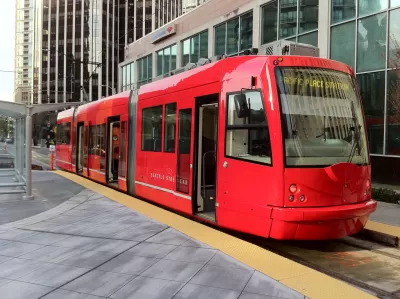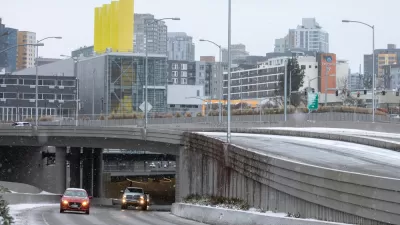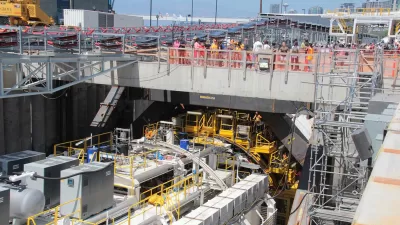By some measures, Seattle's geography makes other cramped cities like Boston and San Francisco seem positively agoraphobic. New Transportation Director Scott Kubly has vowed to keep Seattleites moving through its many bottlenecks.

Few cities present such transportation challenges as Seattle does. With the center city booming over the past decade, thanks in part to the tech industry, demands on downtown infrastructure grow by the day. Unfortunately, according to some, the city's infrastructure is a good decade or two out of date (with less rail than in similar cities), creating insane bottlenecks that are exacerbated by the city's unique layout.
"Part of the problem is simple geography. Seattle is sandwiched between Puget Sound and Lake Washington, and pinched by other lakes and water bodies as well. North-south travel bottlenecks at a handful of bridges, as does any travel to suburbs to the east. (To go west, you’ll have to take a ferry, which creates its own set of challenges.)"
Seattle would seem to be the perfect place for light rail and active transportation, especially because of the city's enthusiastic environmental community, but funding challenges and other opposition have hindered efforts to develop multi-modal transportation. In fact, automobile advocates rose up recently to claim that the city's nascent efforts to promote modes like bike sharing represent a "war on cars." Never mind that fewer cars on the road make things better for those who do drive.
Entering into the fray is the city's new transportation director, Scott Kubly.
"Under Kubly, the Seattle Department of Transportation (SDOT) has laid out an ambitious plan to overhaul the city’s streets. The plan, called Move Seattle, is remarkable in many ways, but none more than this: While it includes maintenance and repair of existing roads, and upgrading bridges to make them earthquake-safe, there are virtually no new accommodations for cars. Instead, it is a plan to more efficiently move people around the city by bus, transit, bike, and on foot."
FULL STORY: Seattle’s smart plan to remake its streets

Alabama: Trump Terminates Settlements for Black Communities Harmed By Raw Sewage
Trump deemed the landmark civil rights agreement “illegal DEI and environmental justice policy.”

Planetizen Federal Action Tracker
A weekly monitor of how Trump’s orders and actions are impacting planners and planning in America.

The 120 Year Old Tiny Home Villages That Sheltered San Francisco’s Earthquake Refugees
More than a century ago, San Francisco mobilized to house thousands of residents displaced by the 1906 earthquake. Could their strategy offer a model for the present?

High-Speed Rail Tracker
Smart Cities Dive follows high-speed rail developments around the country

Ken Jennings Launches Transit Web Series
The Jeopardy champ wants you to ride public transit.

BLM To Rescind Public Lands Rule
The change will downgrade conservation, once again putting federal land at risk for mining and other extractive uses.
Urban Design for Planners 1: Software Tools
This six-course series explores essential urban design concepts using open source software and equips planners with the tools they need to participate fully in the urban design process.
Planning for Universal Design
Learn the tools for implementing Universal Design in planning regulations.
Clanton & Associates, Inc.
Jessamine County Fiscal Court
Institute for Housing and Urban Development Studies (IHS)
City of Grandview
Harvard GSD Executive Education
Toledo-Lucas County Plan Commissions
Salt Lake City
NYU Wagner Graduate School of Public Service





























